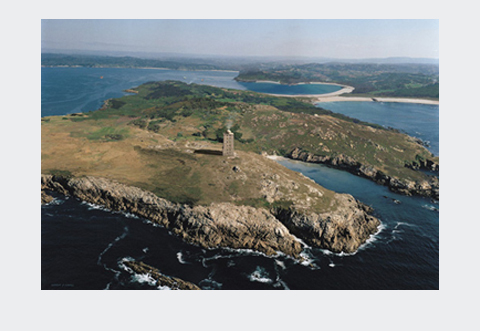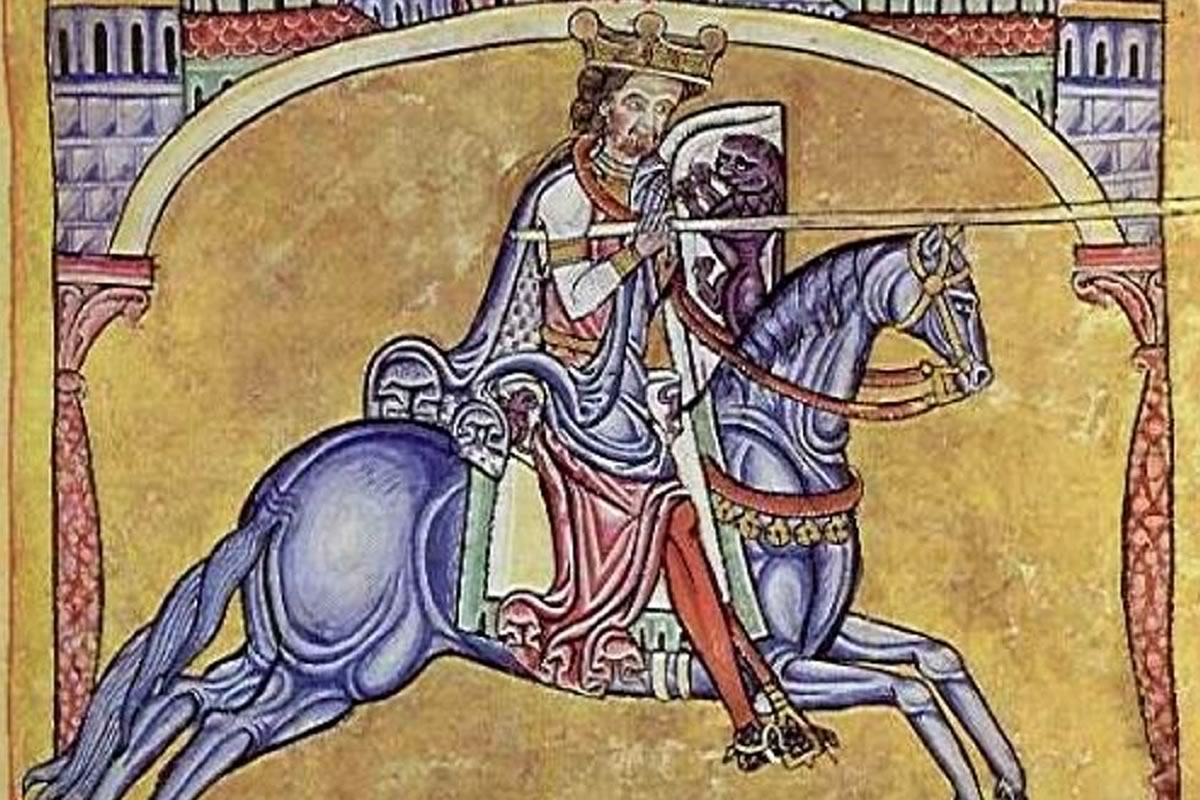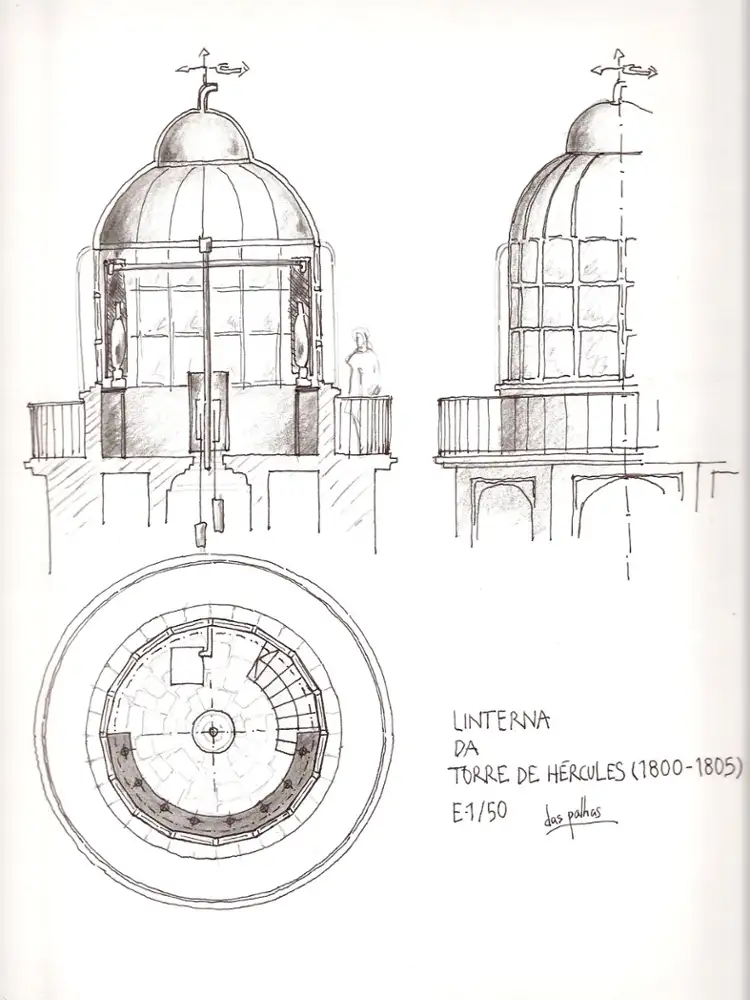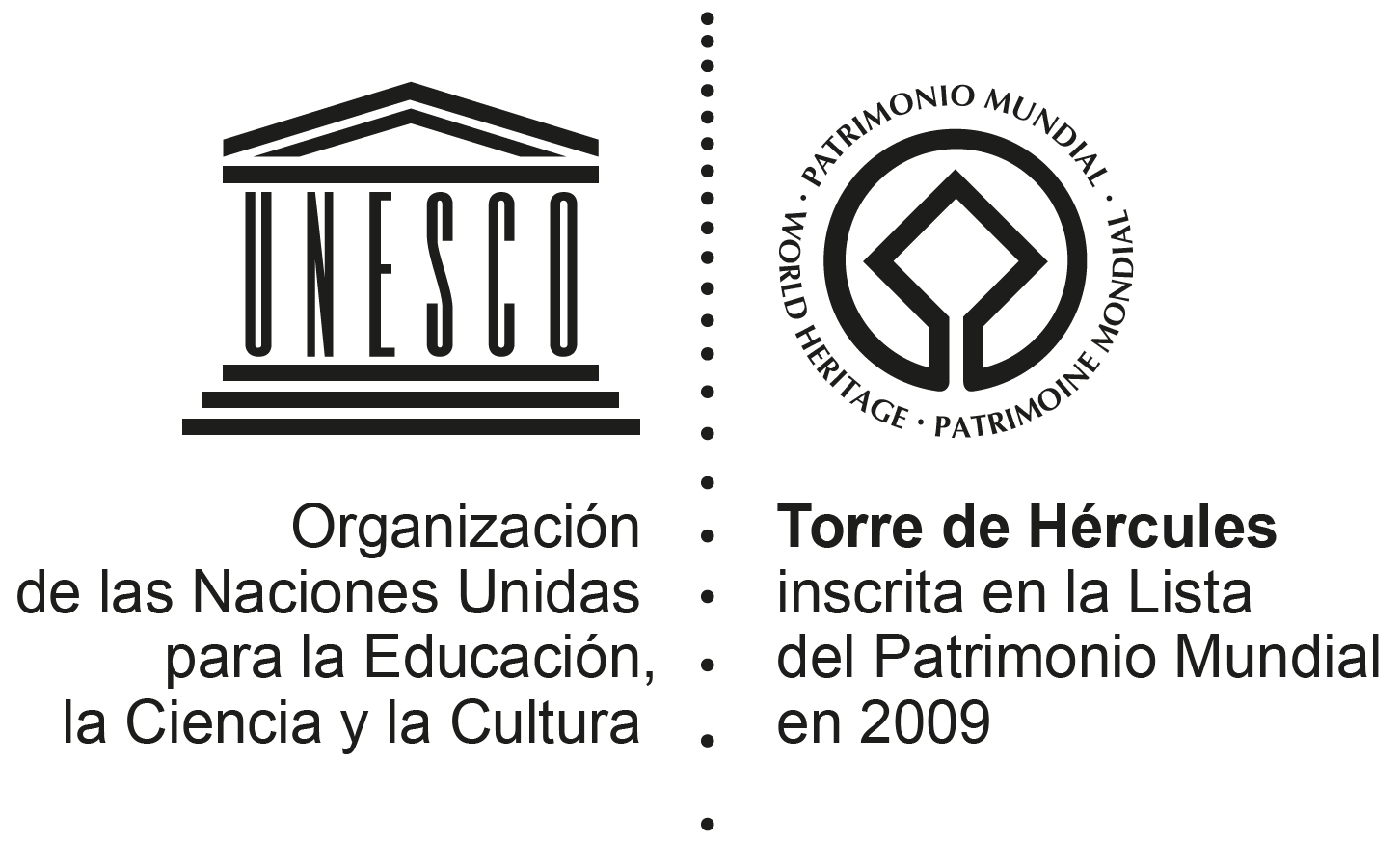- Home
- Discover the Tower
- Two Thousand Years of Light
- Ancient Times
Two Thousand Years of Light
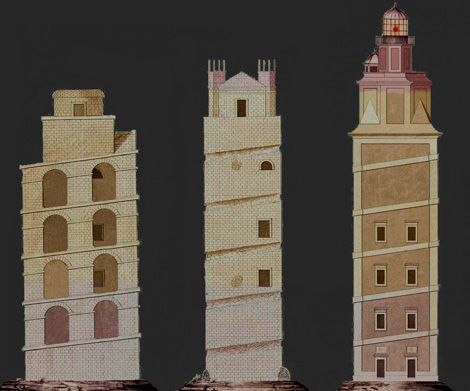
The Tower of Hercules is the only lighthouse that, from its origins in Roman times to the present day, has fulfilled its original function: to serve as a maritime signal and navigational instrument for the vessels that crossed, and continue to cross, the Atlantic corridor. It was probably built in the second half of the 1st century by the Roman Empire, at the finis terrae (end of the earth) of the known world, to guide ships bordering the westernmost tip of the Empire, but mainly to mark the entrance to the great Artabrian port.
Some researchers believe that the Romans built the tower on land that formed part of an indigenous sanctuary or place of worship. In the pre-Roman world, coastal headlands were frequently consecrated to divinities similar to Hercules. In the case of A Coruña, the three large rocks in the sea, opposite Punta Eiras, are known as Ox, Cow and Calf. Curiously, these same toponyms are repeated in the sanctuary of Kenmare, on the south-western coast of Ireland, where traditions situate the island of Donn or of the Dead. Therefore, the land surrounding the Tower would have been the site of a pre-Roman sanctuary with ties to beliefs of the afterlife, evidence of the sacredness of the whole area.
When the Tower was built, it was far from the Roman city of Brigantium, predecessor of A Coruña, but over time the distance was reduced until it disappeared completely. Today, the tower forms part of the city itself, but within a large urban park that occupies 50 hectares of building-free land that are defined as a Natural Area of Local Interest (ENIL).
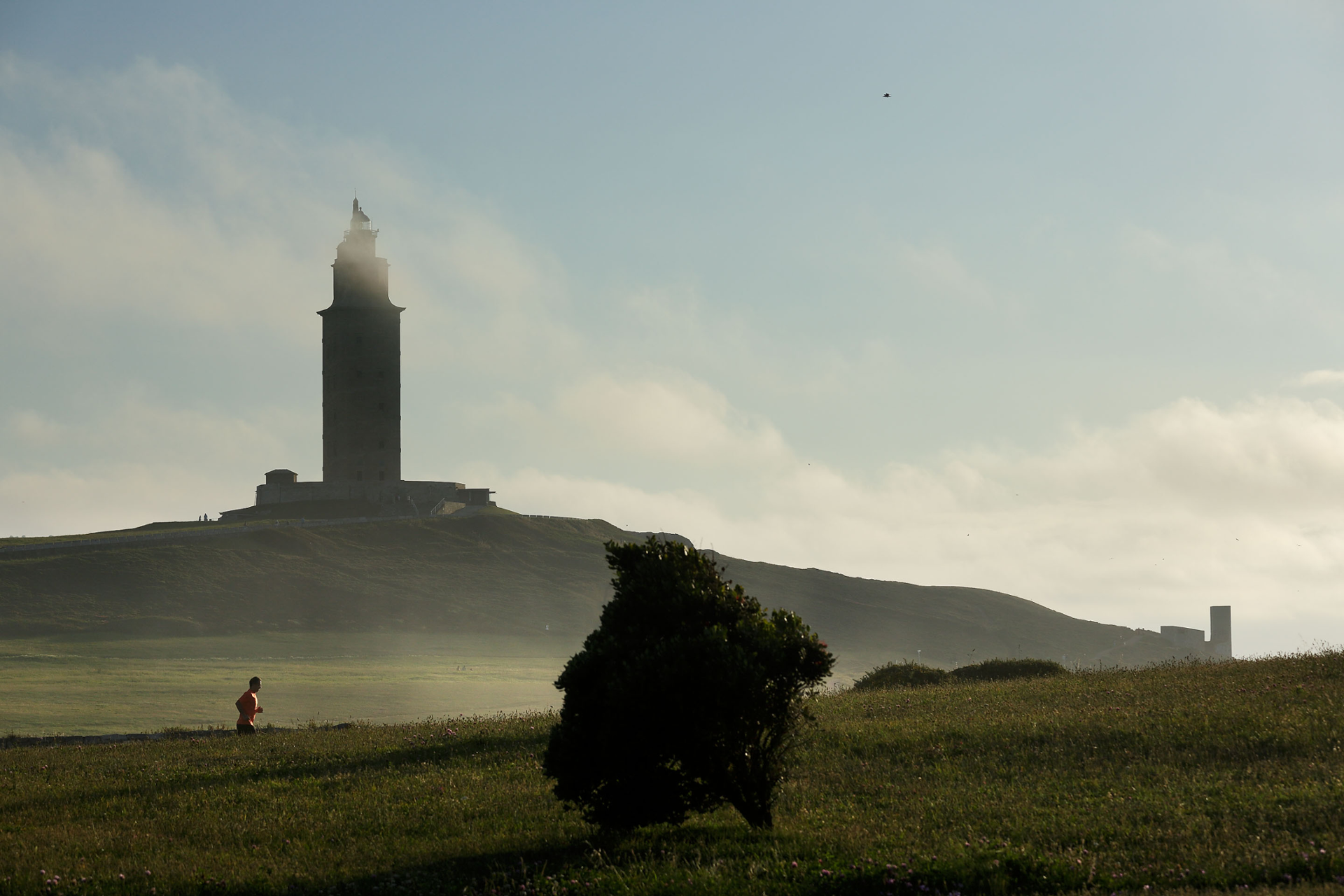
Ancient Times
From the 2nd century BC onwards, there was a growing intensification of trade relations between Hispania and the north-west of the Iberian Peninsula. The expedition of Decimus Junius Brutus that entered the Galician region from the south via Portugal is irrefutable proof of this exchange at a very early date. In 61 BC, according to Dion Cassius, it was Julius Caesar himself, then in Cadiz, who led a sea expedition to Brigantium (present-day A Coruña) with the aim of establishing commercial contacts, which may have materialised in the foundation of a small colonial settlement of strategic importance on the outer limits of the Empire.
Brigantium became an important rearguard port during the Cantabrian Wars (29-19 BC), playing an important role in the distribution of men and materials for the conflict. Subsequently, during the Augustan peace, there was a significant increase in trade relations, which was reflected in the development of the road structure and the increase in maritime traffic, which contributed to a process of profound Romanisation. In this context, the north-west of the Iberian Peninsula became a fundamental territory in the conquest of Britain, and the port of Brigantium became one of the main arrival points of the Via XX, better known as the authentic per loca maritima, where the Roman armies took refuge on their way to conquer Britain. This military interest would justify the construction of a large lighthouse at the entrance to the Golfo Ártabro because ships sailed parallel to the coast from Gibraltar to Fisterra, a few miles from the shore, following the per loca maritima route, but once they reached Brigantium they had to turn the bows of their ships towards the English Channel and the northern territories, entering an open and very rough sea in which they lost sight of the coast until they reached French Brittany.
In the 5th century AD, the lighthouse was still very important. The chronicler Paulus Orosius, a disciple of Saint Augustine, noted in his work, Cosmography, that "the second corner of Hispania faces north, where the Galician city of Brigantia has erected a very high lighthouse for observation [of the sea] of Britannia, worthy of mention as very few other things do".
The Lighthouses of Antiquity
All civilisations throughout antiquity, whether in the Mediterranean - the Egyptians, Phoenicians, Greeks or Romans - or in the East - the China of the Shang and Zhou dynasties - or in the Americas - the Aztecs, Mayas and Incas - have developed different maritime signalling systems, in varying degrees of complexity. However, these systems have not reached us today or have been reduced to mere archaeological evidence.
-
Lighthouse of Portus (Ostia, Italia)
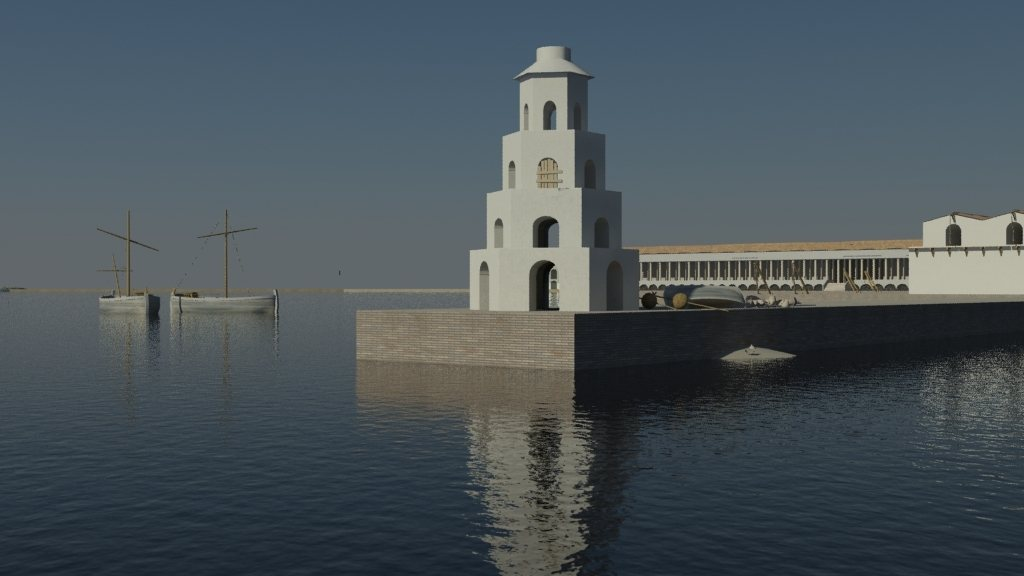
Recreation of the Ostia Lighthouse (University of Southampton)
The lighthouse of Ostia was the one that marked the entrance to the main port of the empire, the great centre of maritime traffic that supplied the city of Rome itself.
It was located very close to the capital, near the mouth of the Tiber River, in the area of Ostia. That's where the Fiumicino was, the canal that gives its name to the place and which in the past served to connect the Portus Traiani with the river Tiber, along which the barges pulled by oxen transported merchandise - wheat from Sicily, oil from Baetica or gigantic marble columns from Egypt - to the capital of the Empire.
It is striking that the main runway of the Leonardo da Vinci airport ends where the lighthouse built by Claudius, following the model of the one in Alexandria, once stood.
Lighthouse of Centumcellae (Civitavecchia, Italy)

Recreation of Civitavecchia and Centumcellae Lighthouse
With the expansion of the empire in the 1st century AD, the port of Ostia proved insufficient to accommodate the intense maritime traffic between Rome and the provinces.
The port of Centumcellae with its lighthouse, built on an artificial island to protect the quays from being pummelled by the waves, was built to divert the excess traffic. This construction project was an initiative of the Emperor Trajan, who, between 103 and 113 AD, backed the construction of this port complex.
Lighthouse of Mesina (Italy)
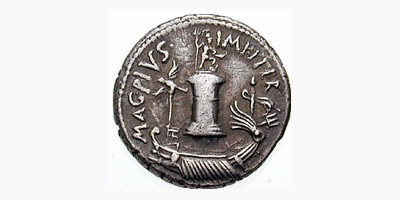
The lighthouse of Messina was located to the northeast of Sicily, on the Cape of Pelorus. It controlled the maritime traffic between the island and the Italian peninsula. On two coins from 35 AD, it appears as a cylindrical tower ending in a dome, on top of which was a statue of Neptune with a trident. Strabo cites it in connection with the Pillars of Hercules, saying:
"... it was an ancient custom to mark boundaries by such monuments; an example of this is the small tower which the inhabitants of Regium have raised by way of a column, over the Strait of Sicily, in the likeness of that of Pelorus, which is on the other side."
Lighthouse of Gades
The chronicles tell that Hercules was the builder of the ancient lighthouse of Gades, based on a four-sided temple 100 cubits high (89.22 m).
According to surviving sources, this lighthouse was crowned by a statue of great proportions and was destroyed in 1146 by the Moorish armies of Ibn Isa Maymum. No visual records have survived.
Lighthouse of Chipiona, Ancient Turris Caepionis
In the 2nd century BC, the Turris Caepionis, erected by order of the proconsul Quintus Servilius Caepio, was built on the site where the lighthouse of Chipiona stands today, in order to prevent ships from running aground on the reefs of the Guadalquivir River, which posed a serious danger.
The Turris Caepionis was described by Strabo, who considered it to be one of the best lighthouses known. Unfortunately, no remains of this important building have survived.
Tour d’Ordre or Turris Ardens (France)
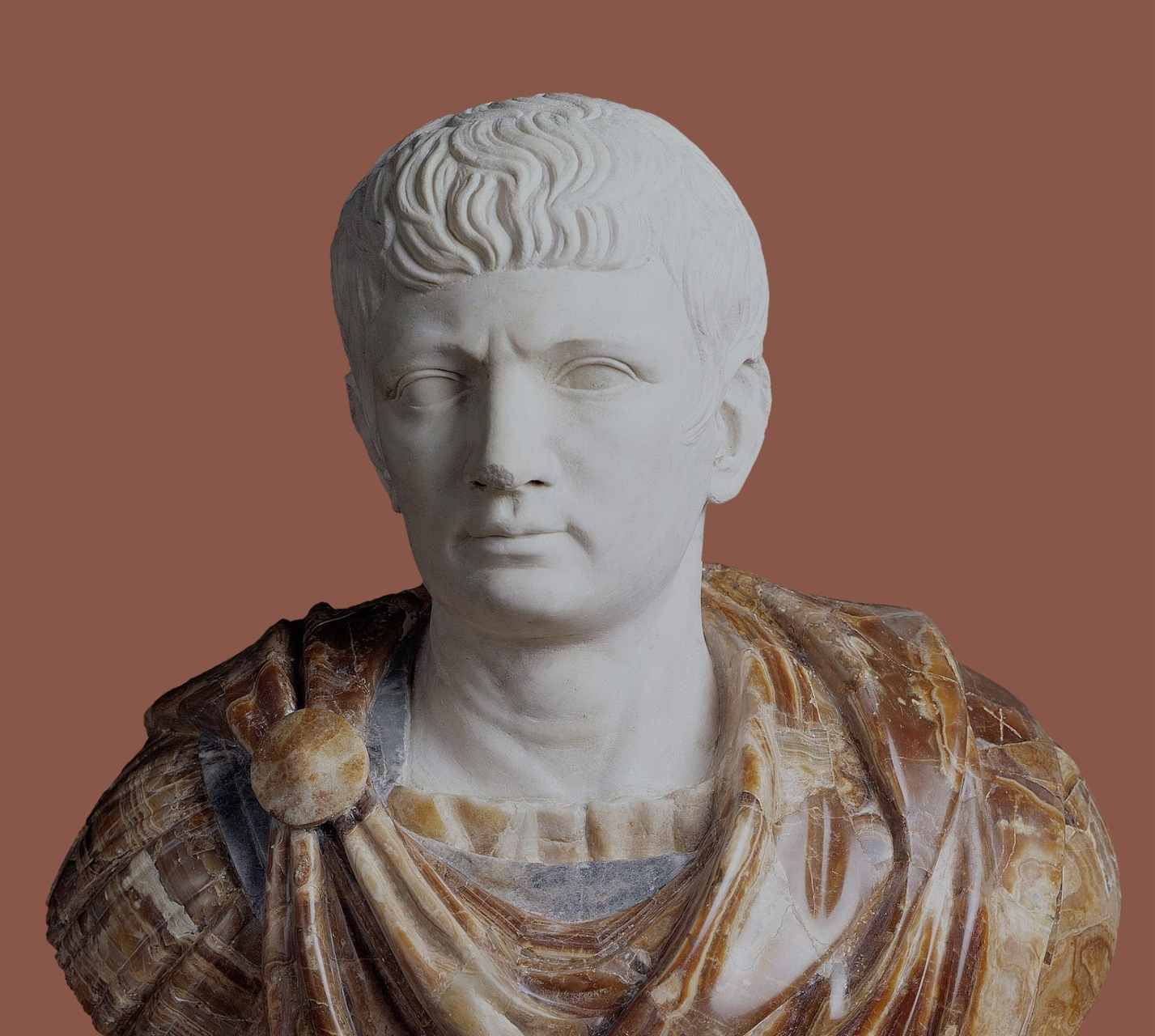
The Tour d'Ordre was commissioned by Caligula around 40 AD to commemorate a victory. It was erected on the high French cliffs near the mouth of the River Liane. One of the camps of Julius Caesar's troops had been located in this area, and Claudius had used this port as a base for the conquest of Britannia. Between 43 and 296 AD, the Roman Atlantic navy of the northern provinces was based in Bononia or Boulogne.
Remarkable remains from this period are preserved in this city, such as some fragments of the wall that marked the limits of the Roman camp and the crypt of a forgotten building.
Lighthouse of Dover or Turris Dubris (England)
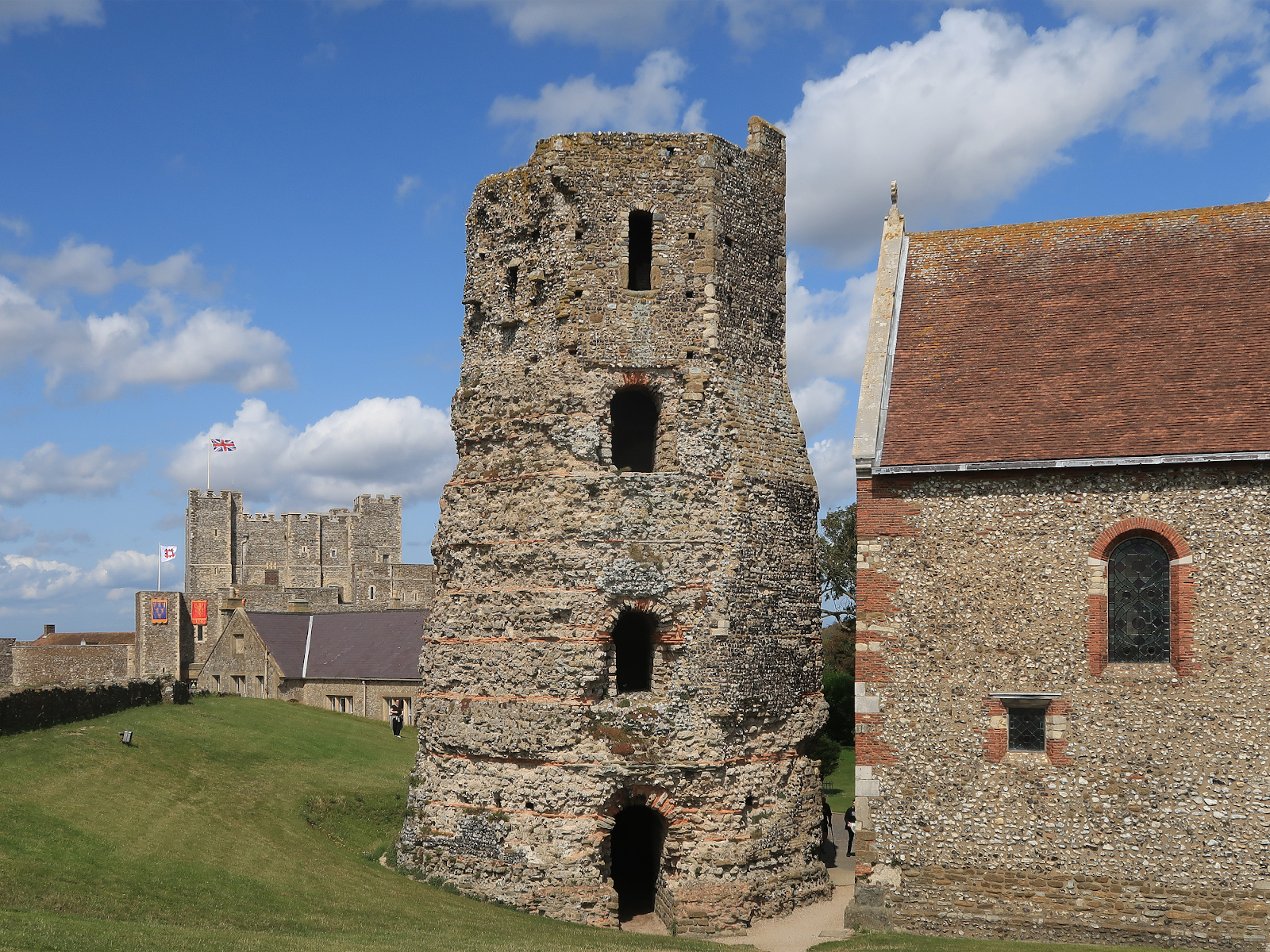
Remains of the Lighthouse of Dover used to build the belfry of the Church of St Mary
Dover Tower, located in Kent county in England, across the English Channel, was one of the two lighthouses marking the entrance to the port of Dover.
It was probably commissioned by the Emperor Caligula when the Tour d'Ordre was erected around 50 AD. The Turris Dubris was built on the high white cliffs overlooking the harbour. Because of its strategic position, it became a watchtower in medieval times and marked the beginning of Dover Castle, of which it now forms part. It is 62 feet high (18.6 m), of which only 43 feet (12.9 m) are from the Roman construction and the rest from its reconstruction during the time of Henry VIII. The badly damaged walls were reused centuries ago to build the belfry of the nearby Church of St Mary.
